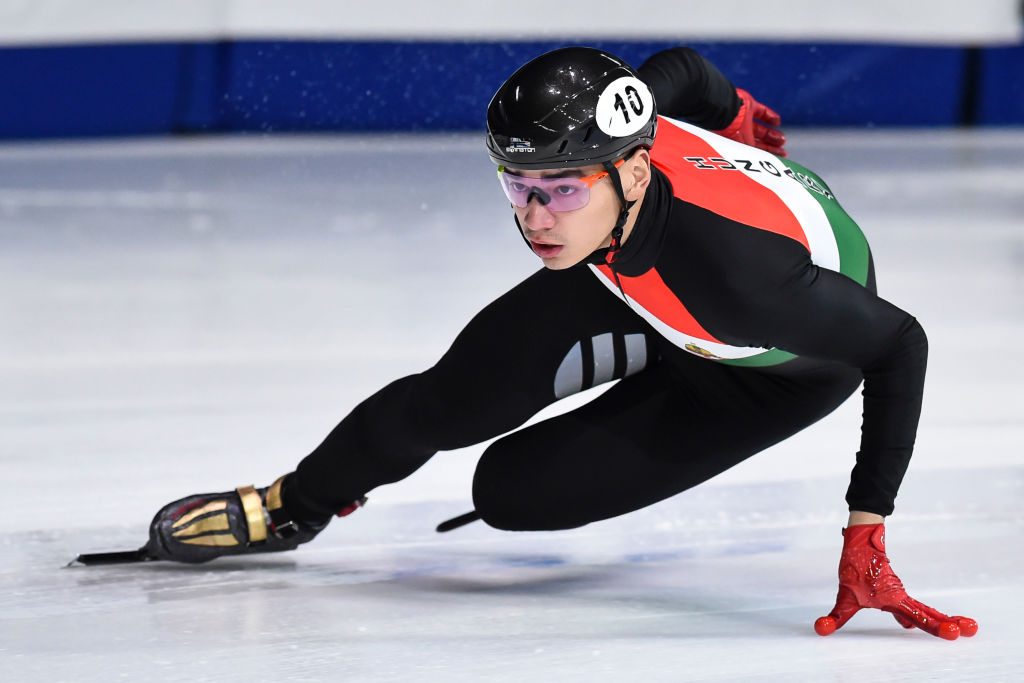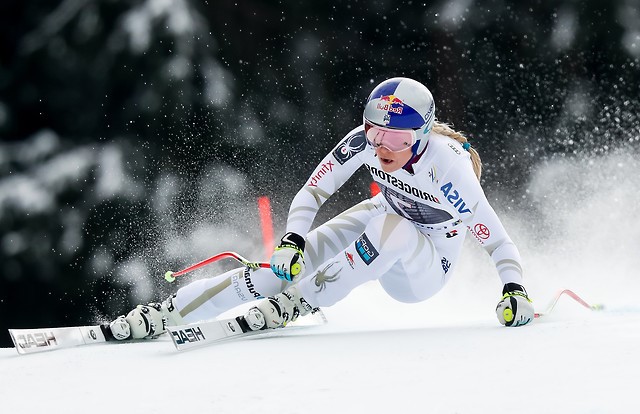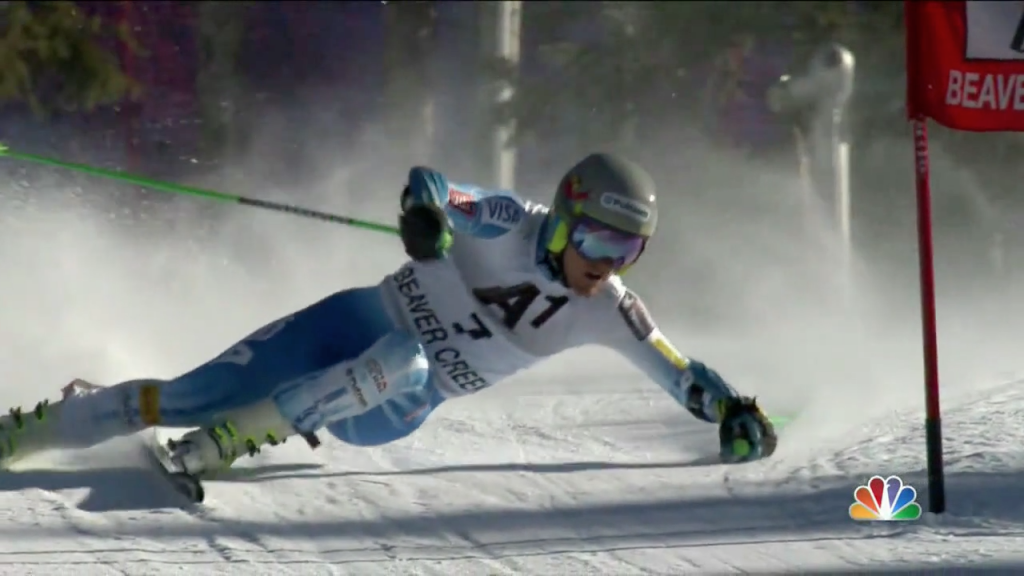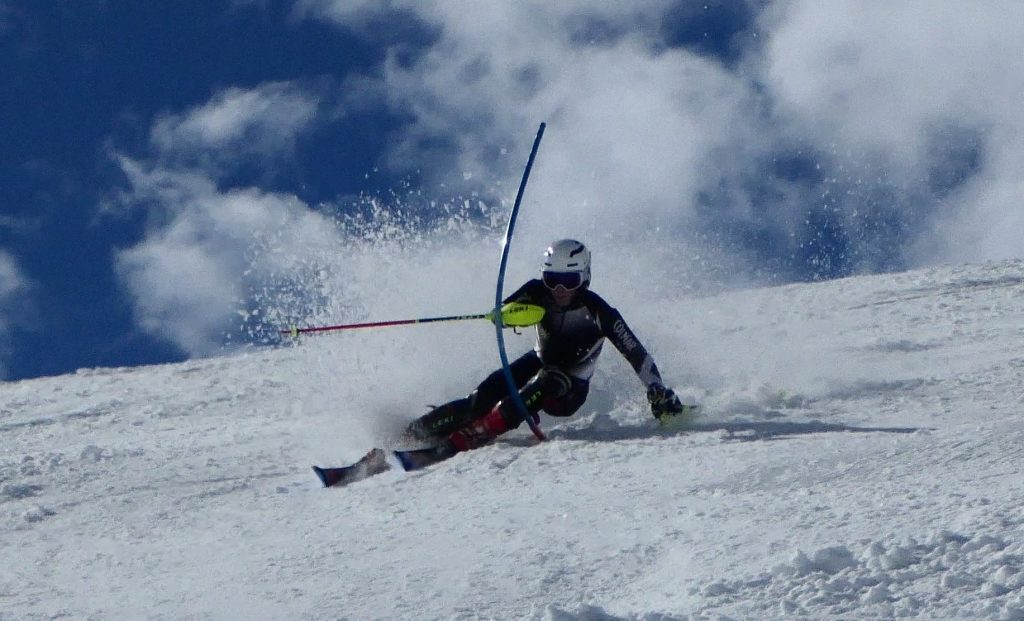Filmed before working on dynamics…
Filmed after basic dynamics was learned…
Skating
Skiing is just disguised skating. The main difference is the skis are wide and have two edges. When diverging the skis outwards at the tips into a skating stance the skis want to flatten on the snow and the stiff shaft of the ski boots will pull the knees outward. The adductor muscles need to be engaged to hold the skis on their inside edges. This is a pattern of muscle use – the adductors of both legs contracting – that should be maintained when skiing parallel.
Skis diverging yet holding the adductor muscles active on both legs.
To skate more efficiently – fall forward and let gravity generate the forward propulsion.
The key to skiing is being aware of the motion of the centre of mass due to skating and gravity.

Skating Step turns
Now proper skating step turns! Incrementally moving the centre of mass inwards.
The skating step turns lead direct to parallel turns when the inside ski is simply not lifted off the snow.


Basic Dynamics
- Skis must be travelling forward – like a bicycle
- This is mainly about using the outside leg (start of new turn) to push the centre of mass into the centre of the new turn – for the whole duration of the turn
- There is no “balance” when skiing – dynamics is the physics of disequilibrium
- You are looking for stability from organised accelerations (ski technology!)
- Notice in the photos below the outside leg is essentially straight in a skating action (flexion for absorption and other purposes is primarily at the hip joint)
- The centre of mass goes down toward the snow – and to complete the turn it comes back up – like a motorbike in a turn
- There is no “Centrifugal Force” acting on the skier – only a deflection inward away from a straight line. This deflection is used to lift the skier up at the end of the turn – which involves “finishing” the turn – I.E. turning almost back up the hill.
- Remain square to the skis (follow the skis around the turn with your body) until you are really comfortable with movement of the centre of mass and clearly aware of moving it.

Pivot (Skis sliding Sideways)
Pivoting is derived from the skis sliding sideways and can be developed from side slipping (It’s a braking form of turning). With a “pure pivot” as an exercise there is no forward travelling of the ski across the hill. Support for the centre of mass is now provided by support from a downhill pole plant. This is the real reason why we have ski poles! There is a full dedicated explanation of pivoting at the following link: “PIVOT“
Combining Dynamics and Pivot
- Dynamics depends on forward motion of the skis and lateral falling/pushing of the centre of mass
- Pivot depends on lateral motion of the skis – but always with the centre of mass being driven inward (toward the turn centre)
- The two can be combined – when there is both forward and lateral motion – making overall control of trajectory and speed totally under control of the skier
- In all cases there must be active adductor muscle use – and the feet must be “everted” i.e. turned outward inside the ski boots – diverging sightly (skating stance)
- The essential element to take from combining pivot and dynamics is to execute the turn transition from the uphill edge of the uphill ski – noting that the ski enters the new turn more easily than when on its inside edge and this also prevents stemming (and body rotation)
In the deep snow photo below look how the centre of mass is crossing over the skis into the next turn but the skis remain on their uphill edges… (i.e – a carved turn would instead have the skis strongly edged) The flat skis are achieved by strong “anticipation” the body moving out over the skis but the knees still held uphill.


